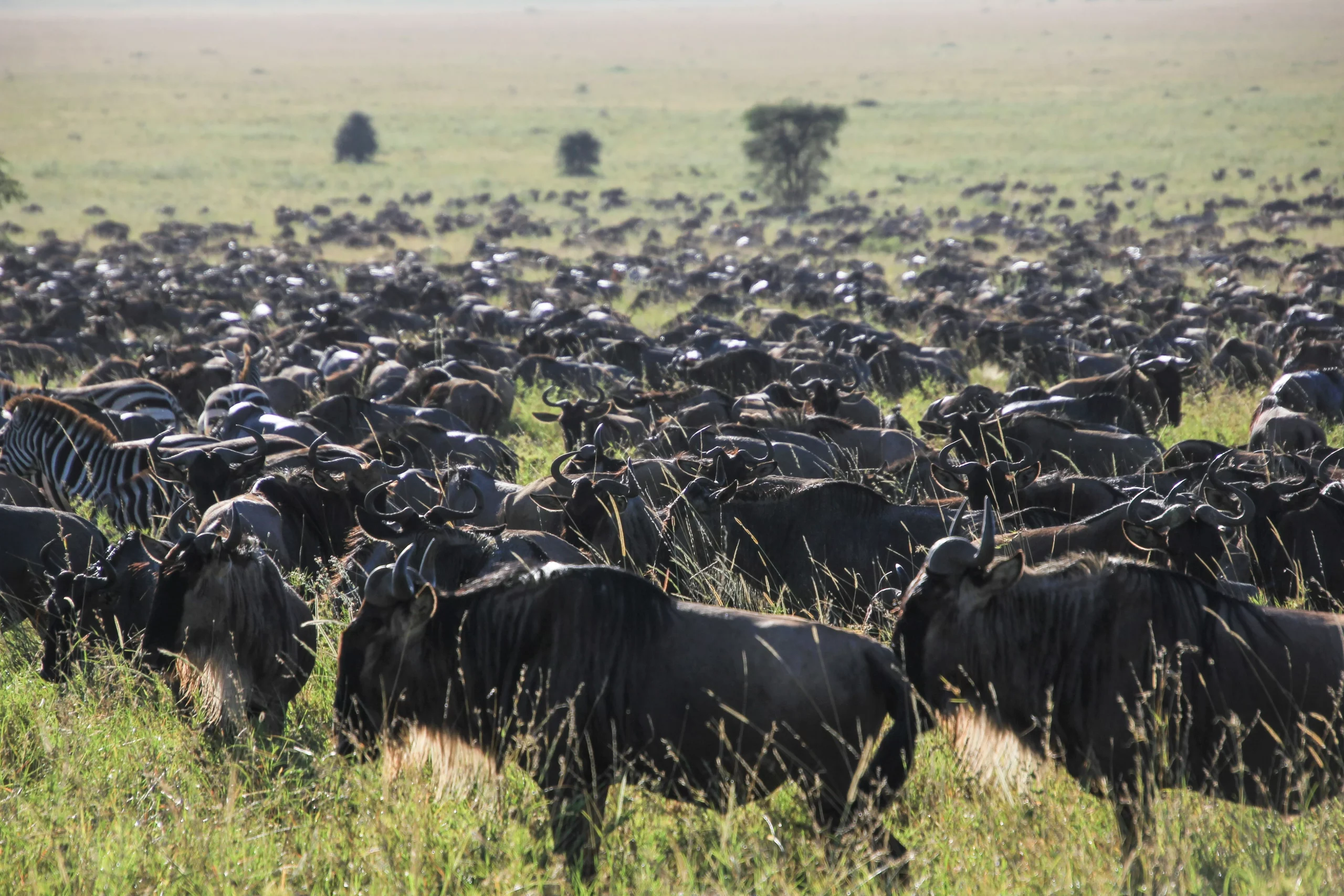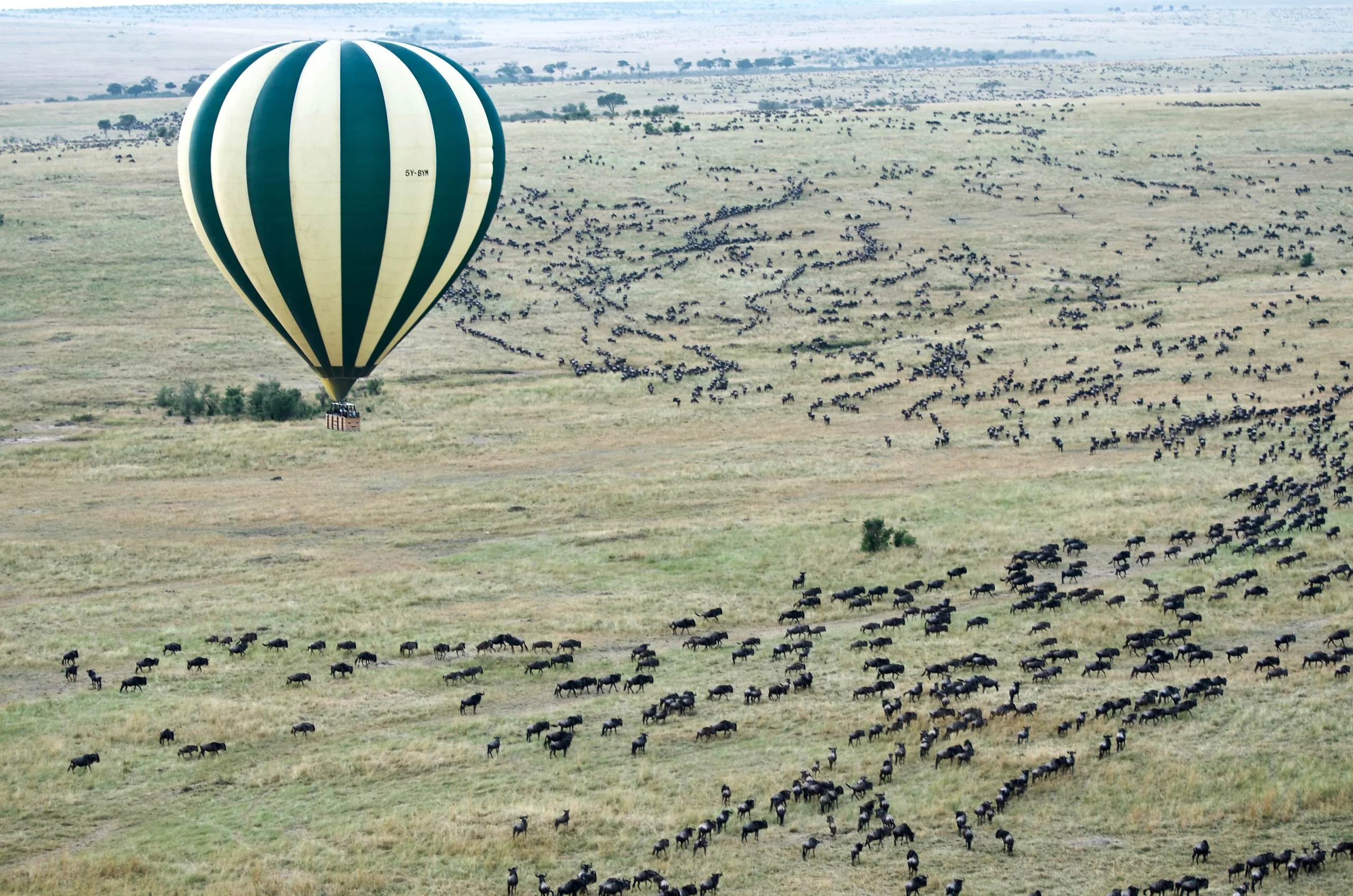
Wildebeest Migration in Masai Mara, Kenya
The Great Migration, as it’s famously known, is an awe-inspiring spectacle where over a million wildebeest journey from Tanzania’s Serengeti northward into Kenya’s Masai Mara Reserve. This annual pilgrimage is a breathtaking display of wildlife behavior, driven by the instinctual quest for greener pastures as dictated primarily by the Serengeti-Maasai Mara ecosystem’s rainfall patterns. For the 2021 and 2022 seasons, we recommend planning your adventure for mid-July, marking the onset of the migration with massive wildebeest herds moving into the Masai Mara. The migration continues until the end of August, gradually tapering off by mid-September. Each year, the numbers fluctuate, but past migrations have witnessed up to 1.5 million wildebeest, nearly a million zebras, and numerous other animals embarking on this epic trek that spans several weeks. Their journey is fraught with peril as they brave the crocodile-infested Mara and Talek rivers, where giant Nile crocodiles lie in wait, ready to seize their prey.
A Guide to the Wildebeest Migration
Travelers planning a safari to Kenya often have a myriad of questions about the Great Wildebeest Migration. Here are some of the most frequently asked queries, addressed concisely for your convenience.
✔ When does the Wildebeest Migration happen? Typically, the wildebeest migrate into the Masai Mara from July to late September. However, exact dates are unpredictable until the first large wildebeest herds gather at the northern edge of the Serengeti, nearing the Mara River. These initial herds may linger for days, making the exact timing of their crossing into the Masai Mara hard to pinpoint.
✔ Where do the wildebeest journey start and finish? The wildebeest migrate from the Serengeti to the Masai Mara, influenced by factors like climate, pasture, and the mating and calving seasons. They travel throughout the year in a clockwise direction, covering vast areas from Southern to Central and Western Serengeti. Their return to the Serengeti, typically around late October, is less dramatic, resembling a slow dispersal.
✔ What’s the best time to witness the Migration in Masai Mara? Drawing from years of experience, mid-July to late August is ideal for observing the migration. It’s a gradual spectacle unfolding over weeks along the Serengeti-Masai Mara border. If we had to choose the prime month, August would be our top pick.
✔ How can you experience the Wildebeest Migration? The migration can be observed during a safari game drive in the Masai Mara Game Reserve, conducted in specially equipped vehicles driven by experienced guides. To witness the dramatic river crossings, it’s essential to position yourself at key points, as some lodges and camps may be an hour’s drive from the best vantage spots. For many visitors, seeing the wildebeest cross the Mara River is a tour highlight, so ample time at these crossing points is recommended, even though their exact locations may slightly vary each year.
Month by Month Wildebeest Migration
While many assume the Great Migration is a singular annual event, it is actually a year-long spectacle, offering distinct and thrilling wildlife encounters throughout the seasons. The dramatic river crossing, often associated with the peak safari season, leads to the misconception that this is the sole time to witness the wildebeest on the move. This iconic crossing typically takes place at the Mara River from late July to August, extending into parts of September, and again during their return southward from late October through early November. These periods are prime times to observe the annual wildebeest migration in the Masai Mara. Below is a general guide to the herds’ whereabouts throughout the year, keeping in mind that their movement is influenced by rainfall, which can vary in timing.
December to April
During the months from December to April, the wildebeest herds make their way to the southern reaches of Serengeti National Park, settling between the Ndutu plains and the Ngorongoro Conservation Area. This period is an ideal time to visit the far south of the Serengeti, especially around February, which marks the calving season. Witnessing a wildebeest birth is a truly remarkable experience as the herds move quickly, seeking lush grasslands to nourish their newborns. The presence of vulnerable calves inevitably attracts predators, with lions and leopards following closely to take advantage of the situation. By the end of March and into early April, the herds begin their gradual northward migration, with many already making their way into the central and western Serengeti.
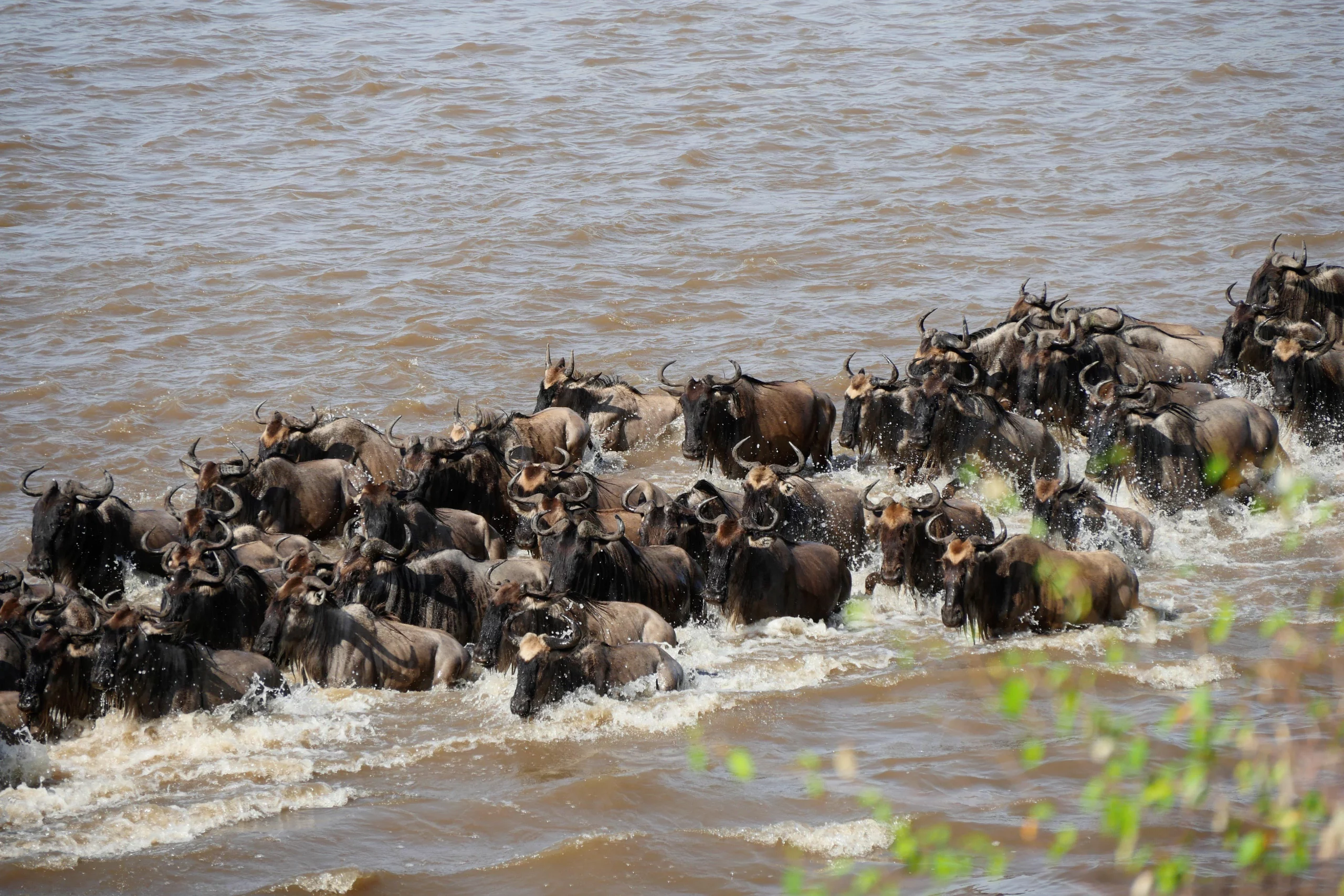
May to June
As the months of May and June roll in, the migratory herds are on the move, heading northward in search of fresh grazing grounds and water sources. This period is marked by the impressive sight of massive columns of wildebeest, sometimes stretching up to 40 kilometers (25 miles) long, funneling into the central and western Serengeti. These massive herds, which can number in the hundreds of thousands, are often accompanied by zebras and a sprinkling of Thomson’s and Grant’s gazelles. By June, the rainy season draws to a close, signaling the time for the Grumeti River crossing. While this crossing is largely determined by the water levels of the Grumeti River, and you might spot the lurking Nile crocodiles, it doesn’t quite match the dramatic spectacle of the Mara River crossings.
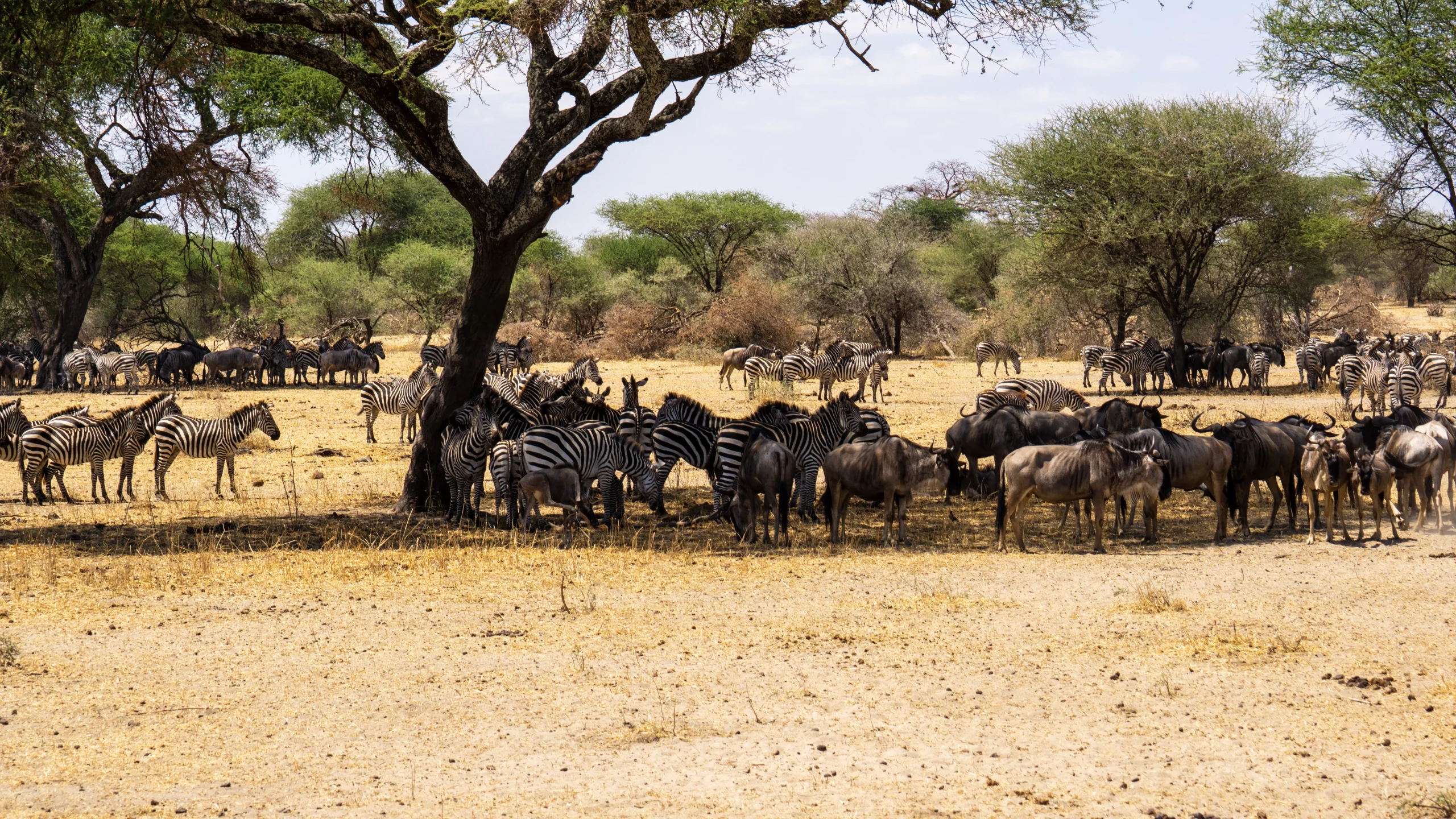
July to September
July marks the beginning of the much-anticipated Mara River crossing, a highlight of the Great Migration. Wildebeest herds gather in the western Serengeti and Grumeti Reserves, nervously eyeing the swirling brown waters they must brave. As August unfolds, those who have successfully crossed continue their journey north into the northern Serengeti, eventually making their way into Kenya’s Masai Mara National Reserve. Here, the herds split into smaller groups: some remain in the northern Serengeti, while others venture across the Mara River. The majority of these massive herds settle in the Greater Masai Mara, feasting on the verdant grasslands before heading further north to explore private conservancies such as Mara North and Olare Orok. This period is often considered the pinnacle of the migration, as visitors witness the heart-pounding spectacle of wildebeest herds frantically crossing the Mara River.
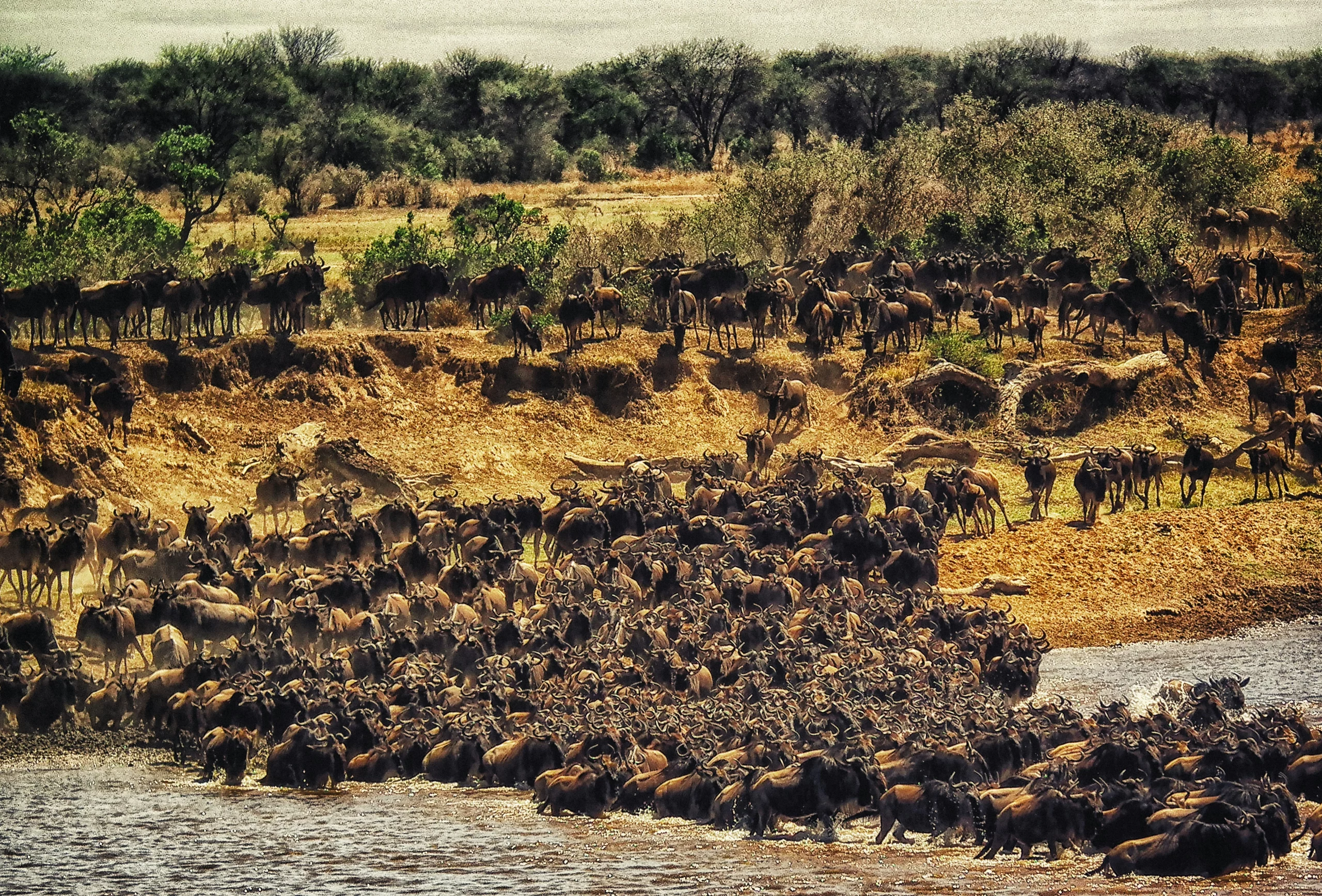
October to November
As the wildebeest herds embark on their southward journey once more, they traverse the western Loliondo and the Lobo area of the Serengeti National Park, returning to the lush green pastures. During this time, the herds are visible in the Kogatende and Lamai regions of the Northern Serengeti. Typically, November marks the onset of the short rains, and by then, the herds have settled in the Serengeti, particularly around Lobo, Mbuze Mawe, and the Seronera Valley, where water is plentiful. With fresh grazing available, the wildebeest congregate in both the north-eastern Serengeti, especially near Lobo, and the southern Serengeti. As calving season kicks in once again, predators are drawn back, and the fascinating cycle of life recommences.
